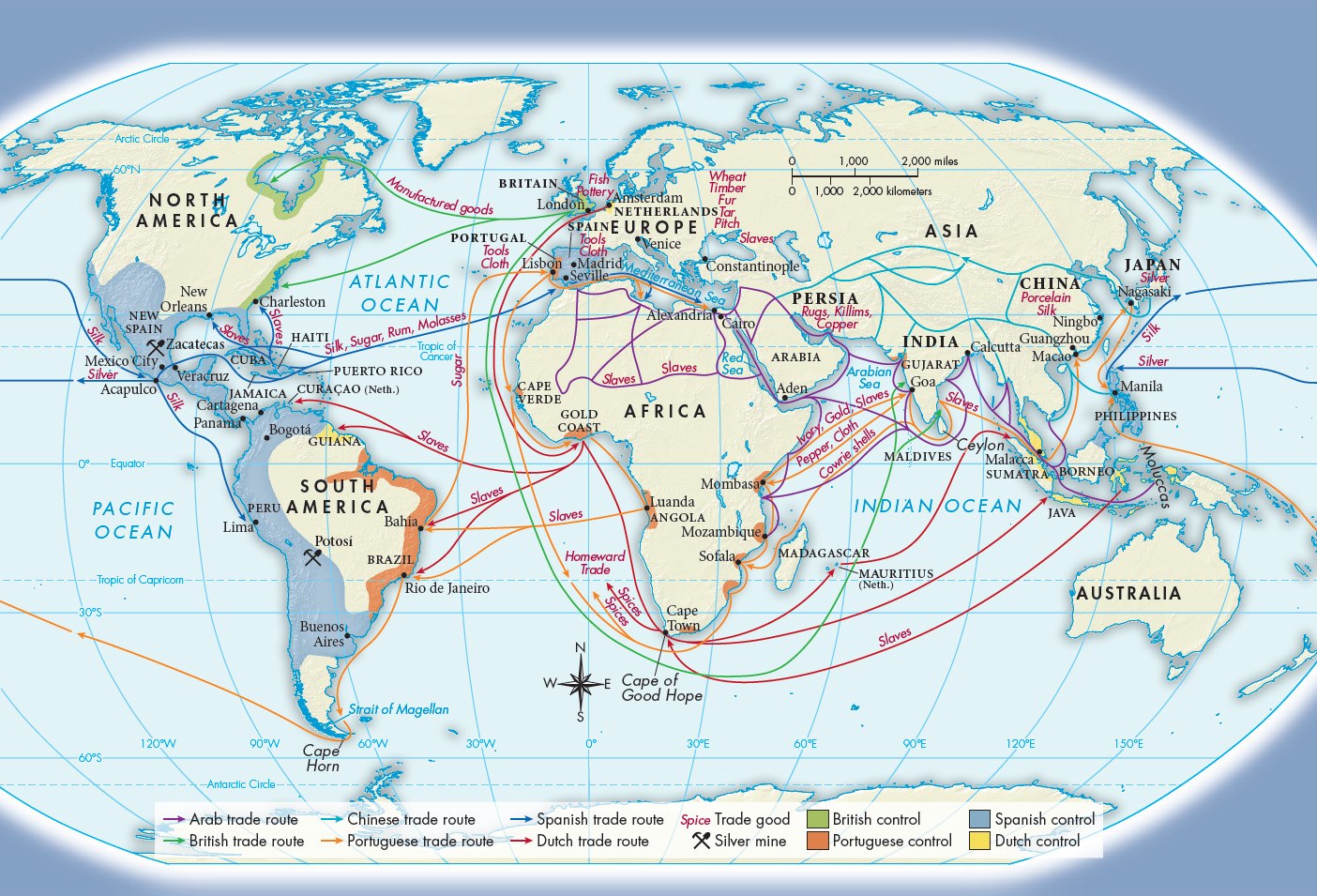The Birth of the Global Economy
With Europeans’ discovery of the Americas and their exploration of the Pacific, the entire world was linked for the first time in history by seaborne trade. The opening of that trade brought into being three successive commercial empires: the Portuguese, the Spanish, and the Dutch.

The Portuguese were the first worldwide traders. In the sixteenth century they controlled the sea route to India (Map 16.3). From their fortified bases at Goa on the Arabian Sea and at Malacca on the Malay Peninsula, ships carried goods to the Portuguese settlement at Macao in the South China Sea. From Macao Portuguese ships loaded with Chinese silks and porcelains sailed to the Japanese port of Nagasaki and to the Philippine port of Manila, where Chinese goods were exchanged for Spanish silver from New Spain. Throughout Asia the Portuguese traded in slaves. Back to Portugal they brought Asian spices that had been purchased with textiles produced in India and with gold and ivory from East Africa. They also shipped back sugar from their colony in Brazil, produced by African slaves whom they had transported across the Atlantic.
Becoming an imperial power a few decades later than the Portuguese, the Spanish were determined to claim their place in world trade. This was greatly facilitated by the discovery of silver, first at Potosí in modern-day Bolivia and later in Mexico. Silver poured into Europe through the Spanish port of Seville, contributing to steep inflation across Europe. Demand for silver also created a need for slaves to work in the mines. (See “Global Trade: Silver,” page 428.)
The Spanish Empire in the New World was basically land-based, but across the Pacific the Spaniards built a seaborne empire centered at Manila in the Philippines. The city of Manila served as the transpacific bridge between Spanish America and China. In Manila, Spanish traders used silver from American mines to purchase Chinese silk for European markets.
In the seventeenth century the Dutch challenged the Spanish and Portuguese Empires, emerging by the end of the century as the most powerful worldwide seaborne trading power. The Dutch Empire was built on spices, and the Dutch East India Company was founded in 1602 with the stated intention of capturing the spice trade from the Portuguese.
The Dutch set their sights on gaining direct access to and control of the Indonesian sources of spices. In return for assisting Indonesian princes in local squabbles and disputes with the Portuguese, the Dutch won broad commercial concessions. Through agreements, seizures, and outright war, they gained control of the western access to the Indonesian archipelago in the first half of the seventeenth century. Gradually they achieved political domination over the archipelago itself. By the 1660s the Dutch had managed to expel the Portuguese from Ceylon and other East Indian islands, thereby establishing control of the lucrative spice trade.
Quick Review
What factors contributed to the pre-cipitous drop in American indigenous populations following European conquest?